

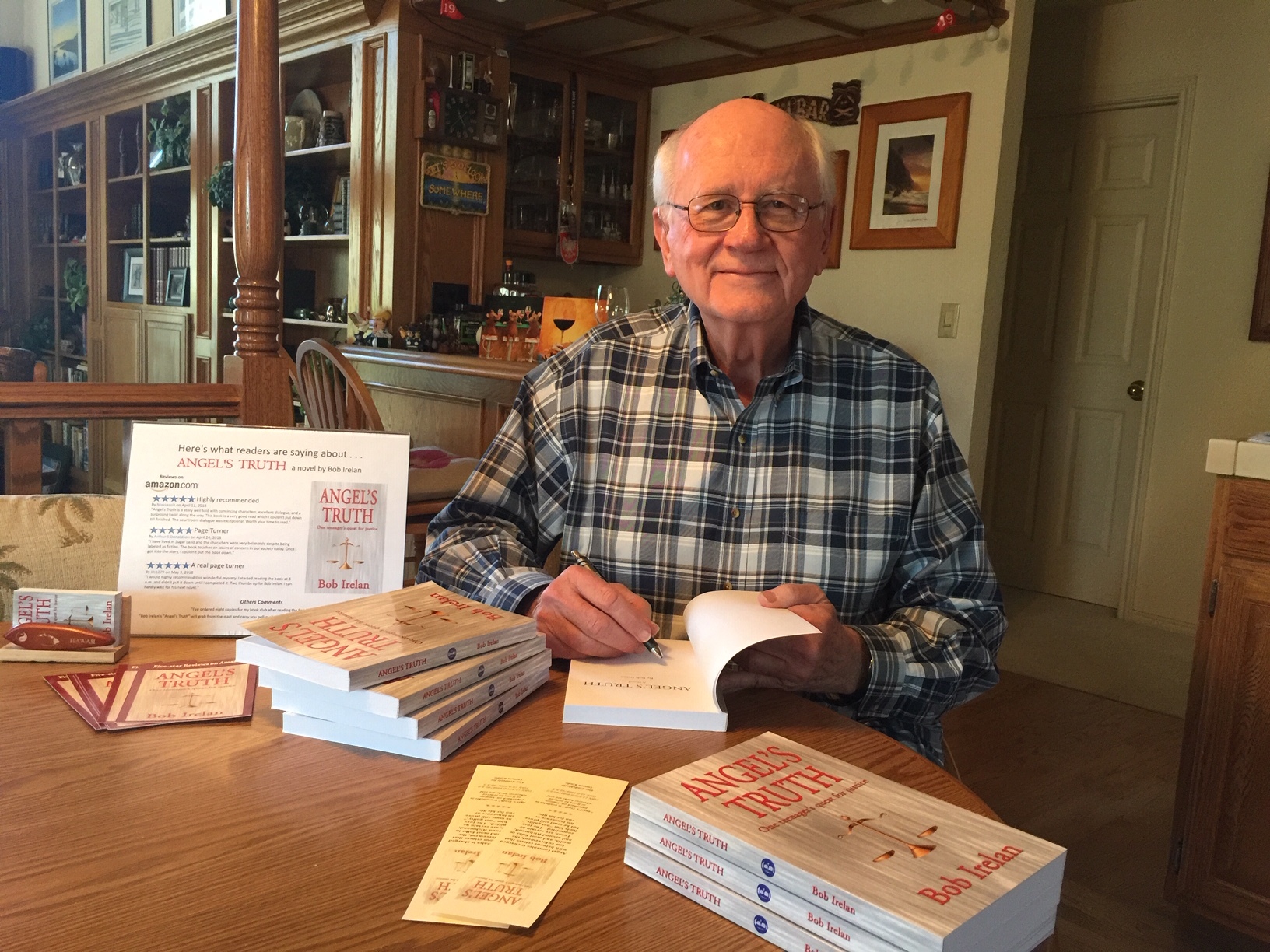
Bob was not only one of our best authors, he was a good friend as well. He once told me that he was proud of his
accomplishments, one of them being that he published two novels in his 80s.
He was inspired to write his first novel, Angel’s Truth, when he had to report for jury duty and sat in on a similar case. His second crime book, Justifiable, was inspired when he lived in West Virginia for many years.
Bob also won awards for his books from the Northern California Publishers & Authors, the 26th Annual Book Awards Competition 2019 winning Second Place in the Fiction Category for Angel’s Truth.
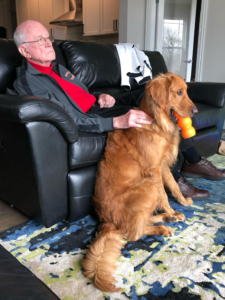
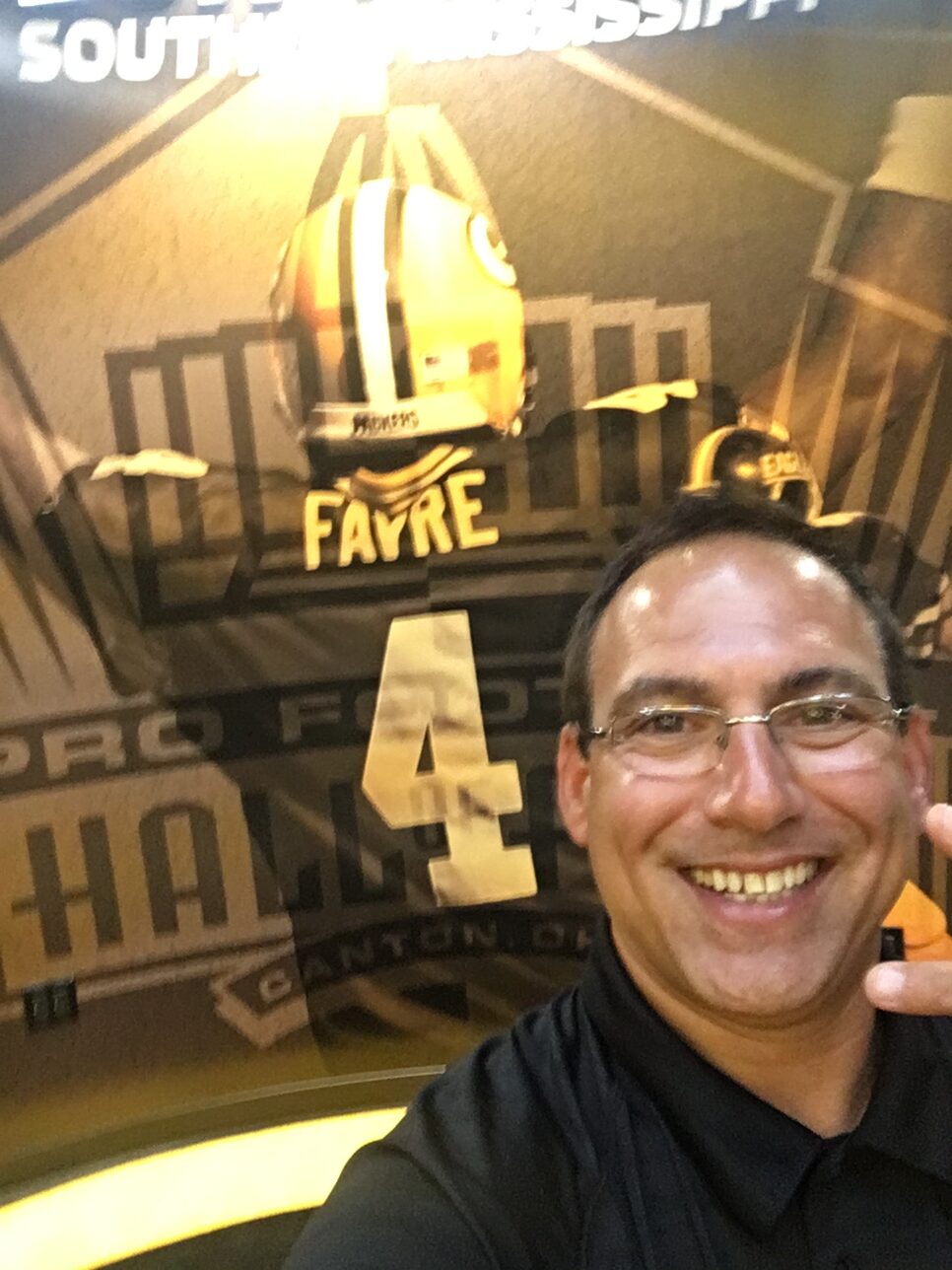
We interviewed Paul Gonnella, fondly referred to as Coach G, regarding his new book, PAID, about the scheme that has ripped off thousands of college football and men’s basketball players for years.
PAID is available on Amazon and the Kindle and in fine bookstores everywhere.
1. What inspired you to write PAID?
After abruptly resigning and retiring from college football in 2020, after almost 2 decades of service, I felt it was my duty, to be honest, to watch out for those who have no power or voice.
2. What are the most important, relevant issue(s)?
The most important relevant issues are:
3. What and how do you think will change with the publication of PAID?
I am hoping it starts a conversation that eventually will lead to change at the foundational level of revenue-making sports.
4. How will sports change as we know it if there are changes?
The sports of FBS college football/men’s basketball will be a better product for public consumption. Not much else will change in terms of the game. The changes I suggest in the book will dissolve the system of the mess it is in right now.
5. Are you thinking about writing a sequel to PAID or a second book?
I have not determined if I will write another book as of yet.
6. Is there anything you would like to add to this interview?
The only way change will occur is if the past players, current players, future players, all their family and friends, and the fans join together to create change. This movement will take a village to create change due to the amount of money and power the schemers have.
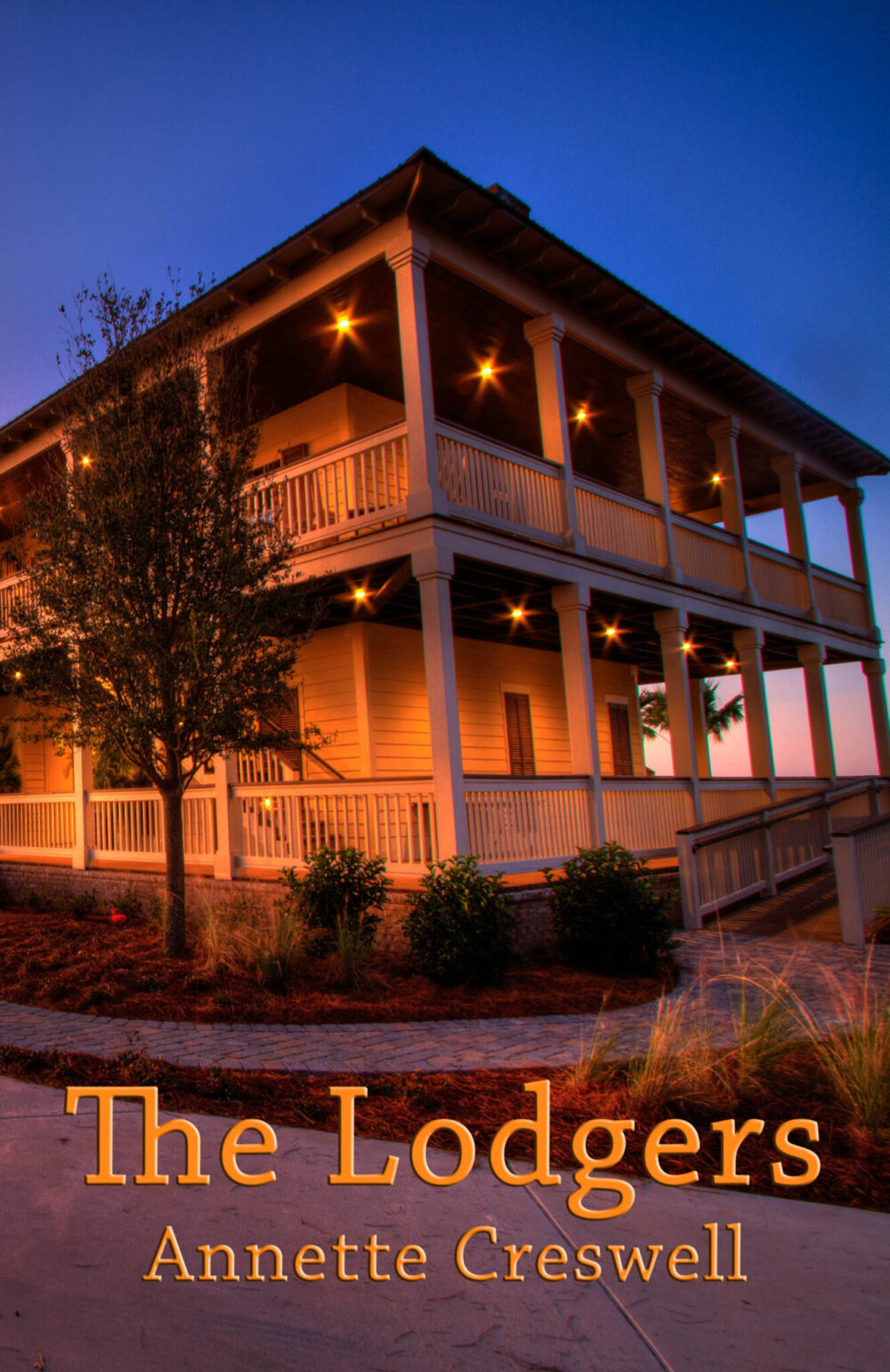
Outer Banks Publishing Group author Annette Creswell was recently awarded the Literary Titan Book Award for her novel, The Lodgers. Here is the email from the organization.
Author Annette Creswell We are proud to present you with our Literary Titan Book Award. Your book was recently reviewed through our Book Review Service, with that service your book is entered into our Literary Book Award competition. Your book deserves extraordinary praise and we are proud to acknowledge your hard work, dedication, and writing talent. Start telling the world that you’re an award winning author, because we will be!
The Literary Titan Book Awards are awarded to books that have astounded and amazed us with unique writing styles, vivid worlds, complex characters, and original ideas. These books deserve extraordinary praise and we are proud to acknowledge the hard work, dedication, and imagination of these talented authors.
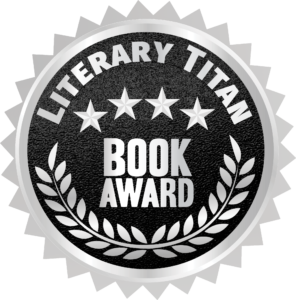
The Literary Titan is an organization of professional editors, writers, and professors that have a passion for the written word. We review fiction and non-fiction books in many different genres, as well as conduct author interviews, and recognize talented authors with our Literary Book Award. We are privileged to work with so many creative authors around the globe.
Annette Creswell is also the author of The Dark Before the Dawn.
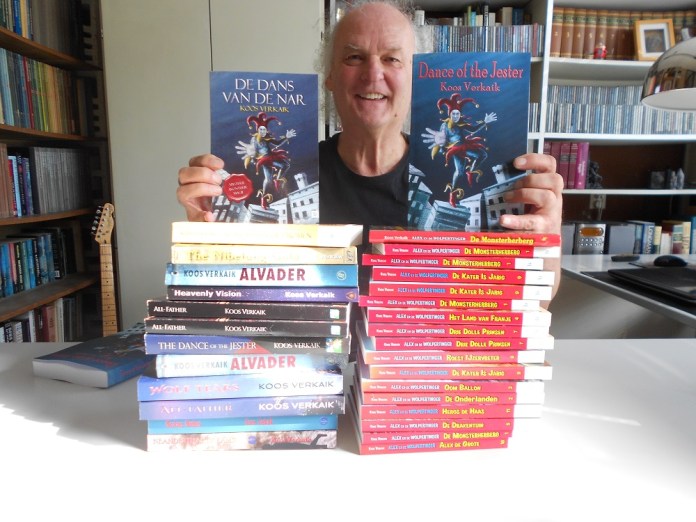
“It is about the origin of everything – rituals, habits, sagas, stories; where does it all come from, how did it start? I live on the old ground here in The Netherlands, the Germanic tribes were here, the Celts, the Romans.”
Read the fascinating and inspiring interview with Koos and how his urban fantasy books relate to modern times.
Koos Verkaik may be one of the most prolific writers you’ve never heard of. A citizen of the Netherlands, he has been published in one format or another, starting with his comic strip, Scotty Clay at the age of sixteen. His latest work explores a topic that has crossed many a mind, especially recently, what if corporations truly took over the world. I was given the opportunity to conduct an interview via email with Mr. Verkaik, and because it is all written word, this interview captures his unique style.
Looking at the novels that are available on Amazon you have written, I have noticed a couple of ongoing themes. And I am curious why the jester is such an important symbol for you?
As a kid, I was confronted with the stories of a mythic figure in The Netherlands, Belgium, and Germany; Tijl Uilenspiegel. A fantastic medieval jester. The figure intrigued me, scared me, and inspired me.
A (court) jester can say and do as he pleases without getting punished.
When I write novels, I feel like a jester myself – I can tell what I want. You can read my books as pure entertainment – magic, mystery, and adventure – but when you are able to read between the lines, you will also understand my opinion about life, about the Big Questions.
In a recent essay about me, historian Max Moragie wrote:
“Anyone who has read or reread a novel by Koos Verkaik (I am now re-reading it for the second time) has enjoyed a story that continues to fascinate and surprise, even if you know the outcome, but is also encouraged to muse about the essence of existence. A pulp writer doesn’t make you think like that, sometimes a literary author, but apparently a Verkaik always does.”
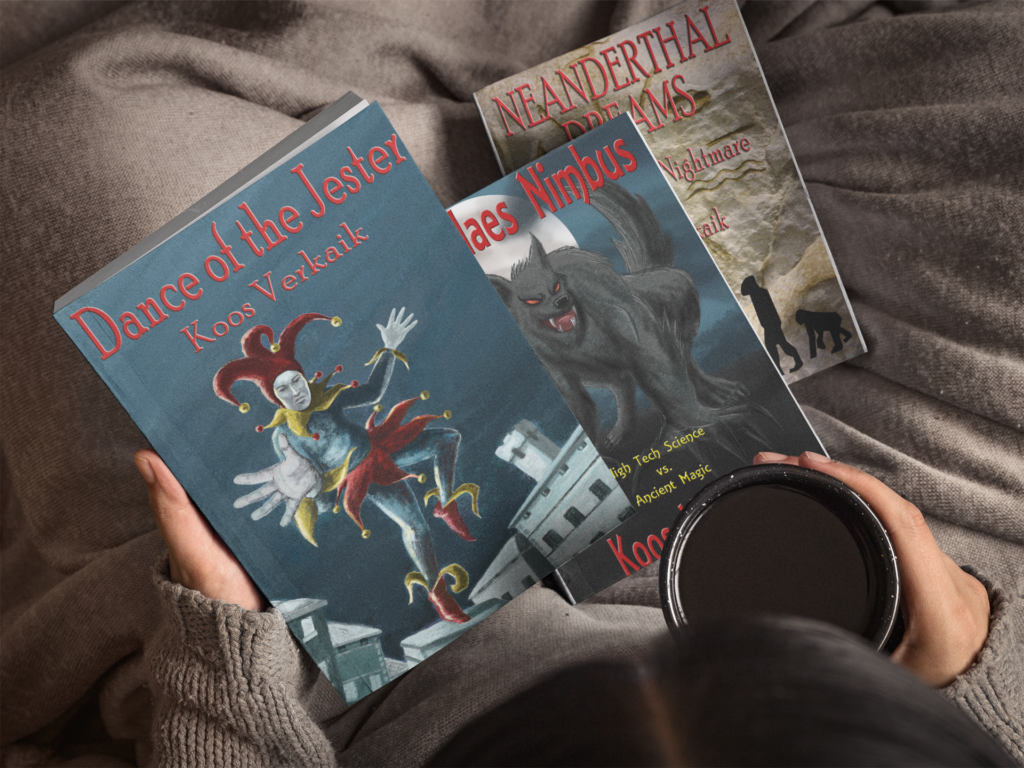 What fascinates you so much about Teutonic mythology that you incorporated it into several of your urban fantasy novels?
What fascinates you so much about Teutonic mythology that you incorporated it into several of your urban fantasy novels?
It is about the origin of everything – rituals, habits, sagas, stories; where does it all come from, how did it start? I live on the old ground here in The Netherlands, the Germanic tribes were here, the Celts, the Romans.
In my novel All-Father, I write about Wodan (Odin) riding the skies with his Army of the Dead. Men covered their faces with soot and got themselves into a trance; that way they joined the Army of the Dead and followed Wodan.
These men also roamed the villages and had ‘the right to steal’; they went into the houses and took things away, like a piece of bread, some fruit, or some beer – this was the origin of the jester! The man with the fool’s cap and the bells who can go as he pleases.
It is our entire history that fascinates me.
In my novels, I write a lot about our past, but also about our future. Like in my novel Nicolaes Nimbus:
“Scientists and wealthy owners of high-tech companies have pumped millions of dollars into the search for immortality. But does the future look bright or is there disaster waiting behind the horizon of time? The world is getting more complicated by the day, but who’s actually in charge?
A group of scientists in Germany has unmasked a cheating visionary. An intriguing phenomenon from the past turns up. Who is Nicolaes Nimbus? Is he an immortal man of flesh and blood from our ancient past? The hunt is on! The secret is priceless! Who is in control, the scientists or the mystic? The novel embraces modern developments… and warns against ancient magic that never dies, waiting for the right time to manifest itself.”

With over 60 books published in both Dutch and English ranging from children’s books to paranormal mysteries to sci fi dramas, Koos is literally a non-stop writer.
Take a few moments to listen to Koos talk and read parts of his best seller, Nicolaes Nimbus with an introduction by Ursula Williams, a blogger, author and podcast creator.
“I decided to become an author when I was in still high school and more or less filled the school magazine with my stories. But I started to write stories much early at the age of seven. I was the youngest published comic writer at the age of 16 when I published three pages every week in a comic magazine. Two years later, when I was only 18, I wrote my first novel (a sci-fi), and it got published immediately. I still remember the day I saw my book in a bookshop window and realized that I actually had become a novelist.” – Koos Verkaik
See more Koos Verkaik’s books in our bookstore.

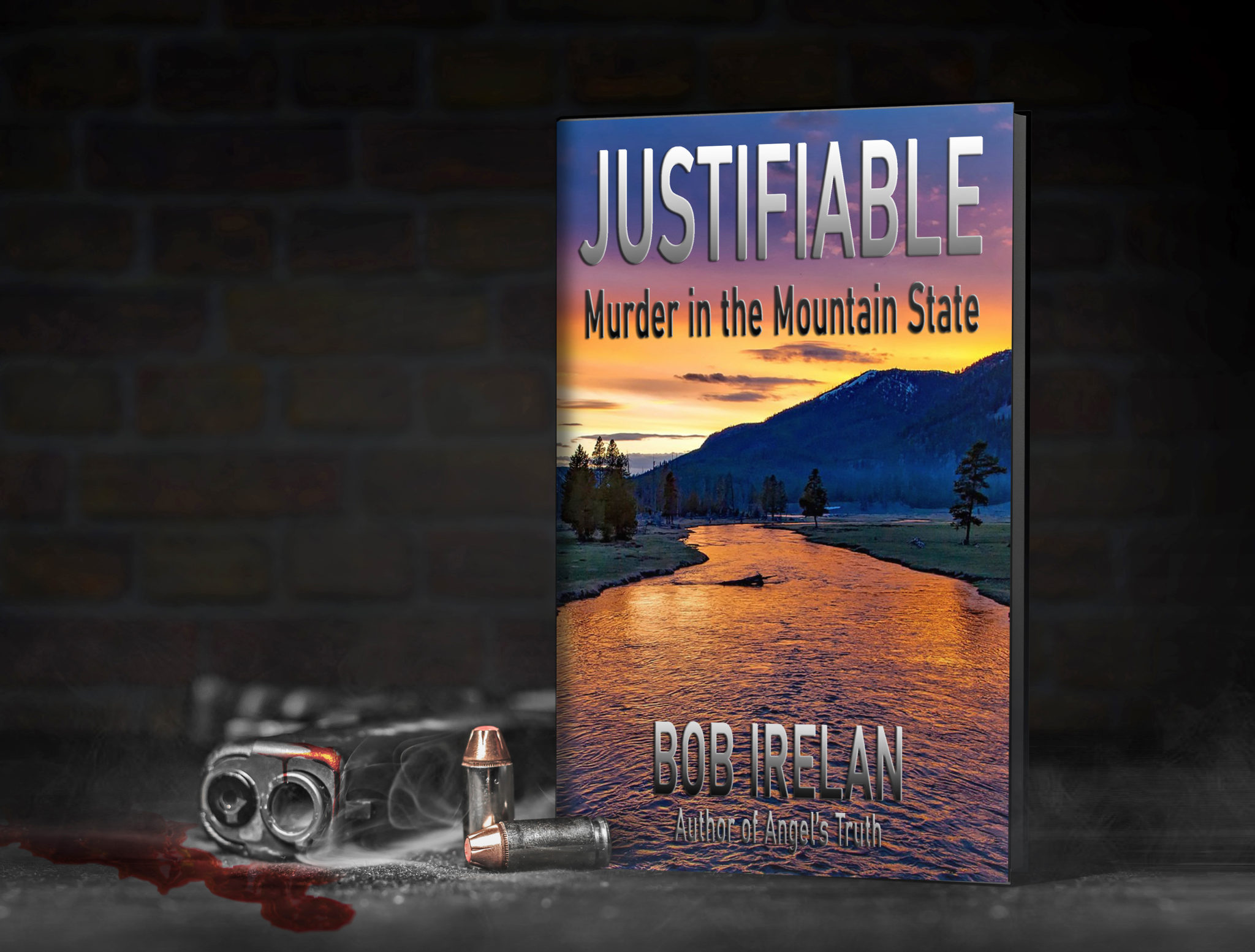
I finished Justifiable last night. It is a remarkably good book.
I started it when it arrived day-before-yesterday. Opened it after dinner to see what it was all about. Read a few chapters to get the drift of the story, then, because I had other things to do—calls to make and return, a meeting to attend, try to get in a little work on a novel of my own that I have underway—put it down to return to tonight.And couldn’t put it down again.
I had no intention of reading the whole thing, but as I got into it the urge to know what happens next was so great I had to keep going.
The police-procedural structure of the book is masterful.
It puts you in the action and makes you feel almost a part of the team.The “story” part is even better.
A villain of utter contempt found naked and dead floating in a river with a bullet in his head and every one of the 200 or so people who live in the town he’s destroyed the likely killer sets up a tantalizing mystery. And the plot twists you throw in as the story unravels keeps the reader, or at least kept me, constantly guessing which of the three most likely suspects does the admirable deed.
The characters are deftly drawn, especially Ella Mae, and the bits of humor dropped in help move the story along delightfully.
It is a really fine read, Bob—a very welcome diversion from the miasma of political, and viral, and social, and environmental pollution we’re wading through now.
Way to go.
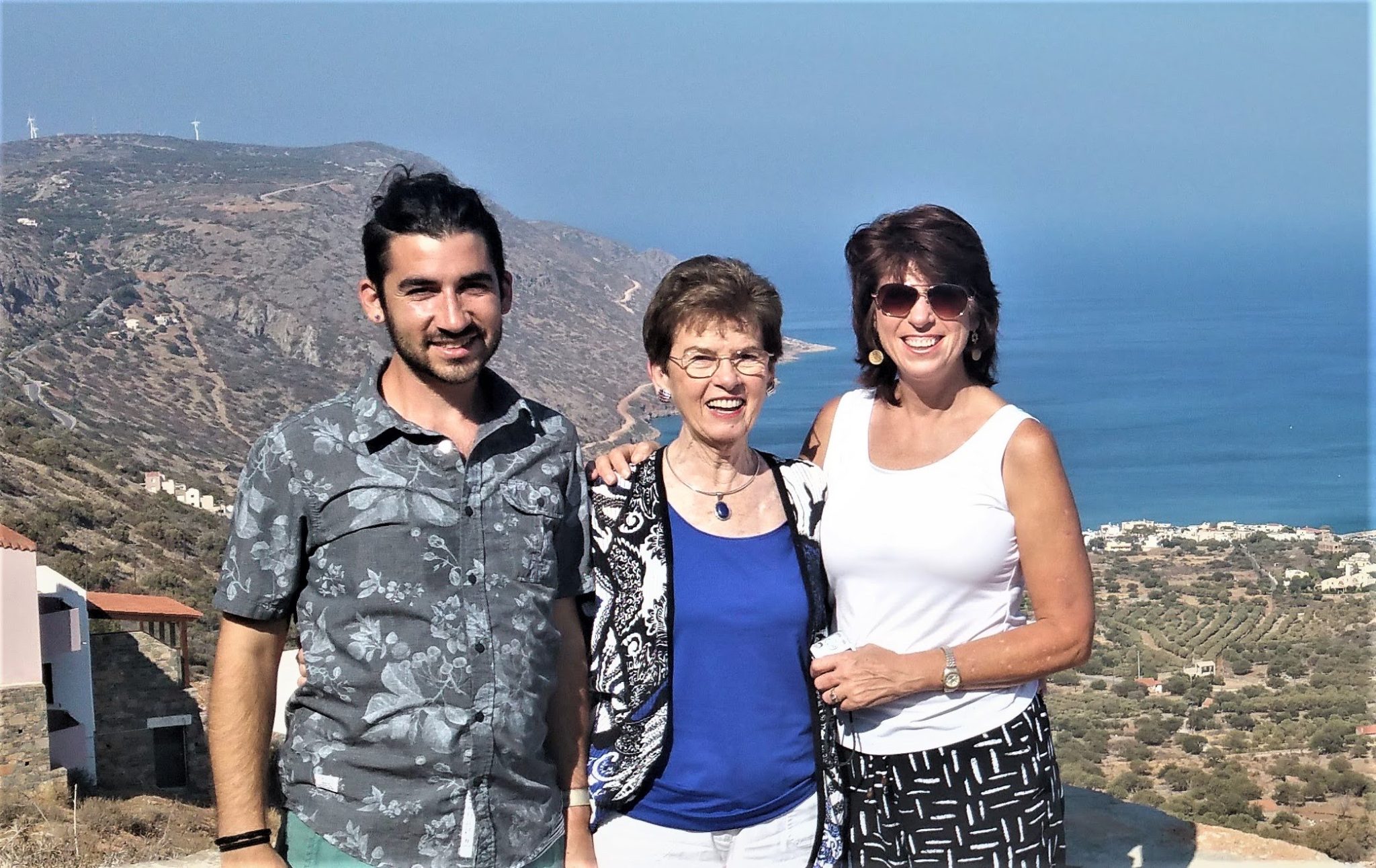
Register below
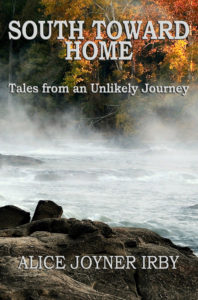
Publisher’s Note
When I first met Alice Joyner Irby, I knew she had an extraordinary story to tell about her life, her family, and the people who crossed her path.
As she finished each chapter over a little less than a year, I knew her extraordinary book was being created. And now it is here as South Toward Home.
Why Alice wrote this book.
“I want others to get to know the characters in my stories, for they are among the good-hearted, strong, independent people who helped make the 20th century the American century.”
Here is a brief synopsis of South Toward Home.
Catch the marvelous imagery in the reading of South Toward Home. Find yourself carried into bygone eras. You will actually encounter stories that span more than eight decades. Experience those remembrances if you have lived through some of these times!
Travel with author Alice Joyner Irby in her journey during periods of turbulent cultural and societal change. She reports her attempts to shatter glass ceilings confronting women in the workplace…her
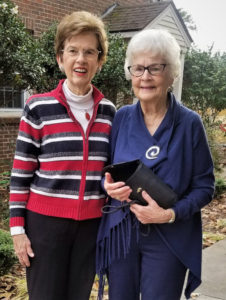
Alice and Glenn Dickens – 2019
role in integrating a university…her participation in the creation of the Job Corps in LBJ’s War on Poverty. Yet, Alice’s roots remain grounded in the South, where she was nurtured and raised in a loving community.
In her twenty-six stories, we come to know well this fun-loving young girl and those who shaped the woman she has become. A single mother with a daughter, the author expresses the bond between
the two. This is a relationship strengthened over time and deepened through their shared experiences. This book is a rare combination of intimate personal portraits coupled with a pragmatic look at the life surrounding them.
It is a book written for family about family, blood or not. Crises and joys…stress and well-being…harsh realities and great kindnesses…above all, Hope!
We, as readers, are drawn into the stories. We have known the folks encountered on these pages, maybe not personally; but these accounts cause us to reminisce about those who have poured into us the life-giving renewal that enables us to meet challenges, to celebrate life with all it brings, and to look up in faithfulness that endures. – Mary W., reader

By Carolyn Harmon
charmon@rrdailyherald.com
Reprinted with permission from the Daily Herald.
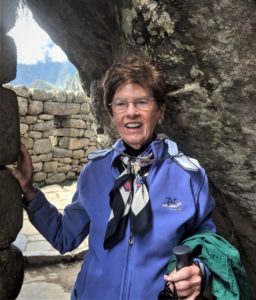
Alice Joyner Irby in The Sacred Valley, Peru 2018
Sit a spell and hear the church bells that called worshippers on Sunday morning — visit Greensboro when UNC-G was the Woman’s College — travel along on other adventures.
Alice Joyner Irby of Raleigh recently had her book published, “South Toward Home: Tales from an Unlikely Journey,” by the Outer Banks Publishing Group.
Alice was born in 1932 and lived in Weldon and after she moved away, she returned regularly until her mother died in 1991. She also visited her very good friend, the late Ruth Gregory Proctor of Halifax.
“Weldon has always been my home,” Alice said. “It is a book about my life, starting with Weldon and ending with Weldon.”
Alice grew up in Weldon, graduating from Weldon High School in 1950. She has lived through the Great Depression and the Korean War, in which her friends were drafted, she said.
“It was scary — and the polio epidemic — my brother, George Joyner, and I were quarantined for a summer, so reading about the pandemic now brings back some of those memories,” Alice said. “They didn’t know how you could get it, but they knew you could get it from other people. So we couldn’t have visitors.”
That is when she learned to play badminton. Alice’s parents were the late Margaret and William B. Joyner. William set up a badminton net during the polio quarantine.
“We couldn’t play ball, it would roll down the street,” she said. “We couldn’t go out in our yard.”
Alice’s sister is Margaret Joyner Kinker. Her brother, George, live in Morehead City and is married to a Roanoke Rapids girl, Gwen Dickens.
“We all came from Halifax County,” Alice said. “My parents were very active in the Methodist Church, and my mother’s family were some of the founders of that church in Weldon — the beautiful Gothic Weldon Methodist Church on Fifth and Washington — it is closed now.”
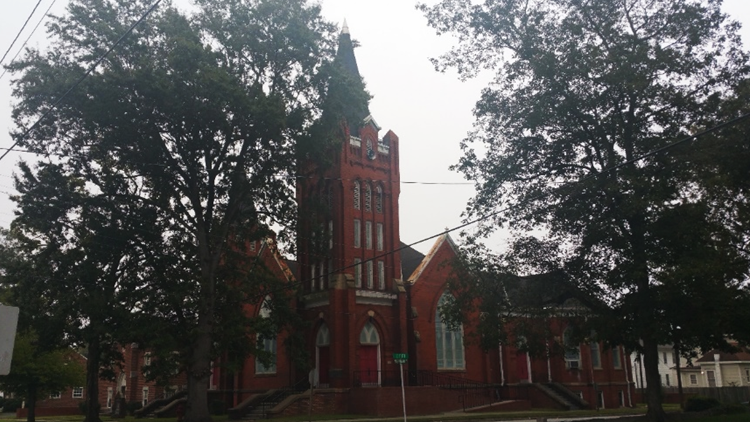
The Weldon Methodist Church, now closed
That is where Alice’s book begins — the first of 26 stories contains a picture of that church.
“The first section is about my growing up in the church, the importance of the church and the town. The second is about my brother, and our adventures — partners in crime — then I had a story about the four of us in Weldon.
“The four of us used to sing for funerals out in the country — sometimes in the family home and sometimes in a country church. They contacted the church, or they wanted some music, the four of us would pack ourselves in Ben Wyche’s car, he was always the driver and we would go sing.”
The four of them were Alice, Wyche, Blanche Selden Bullock, a classmate from Weldon High, who married Thurmond Bullock; and J.P. Ellis.
The first set of stories continues with Alice growing up, the train coming through, the second World War and what it was like living in Weldon during that time. The second set is what happened in Alice’s young adult life.
“One story has to do with how I was discriminated against trying to get on a United Airline Flight just for men in the early 1960s,” she said. “Some of the stories are about me hitting those barriers in those days. Another one has to do with my first job out of graduate school at Merrill Lynch in Greensboro, when I applied I was told, ‘You have the credentials that exceed, but we can’t hire you because you are a woman.’ The laws permitted that at the time.”
Another section is about her career while working for the Lyndon B. Johnson administration’s Job Corps, part of the war on poverty. She attended Rutgers University where she was the vice president for student services, followed by working for an educational testing service that makes the SAT and a lot of the admissions tests, she said.
In other sections, she writes about celebrities and her friends — her daughter, Andrea Irby, growing up with a horse; the time she met George W. Bush on a golf course in Pinehurst; her yard man; her sister, Margaret; two of her friends named Mary; her father; and the fortitude and courage of women in an earlier time, she said.
“I wanted to celebrate a lot of people who have been important in my life,” Alice said.
The book came out of a suggestion and encouragement of her editor in Raleigh, Linda Hobson, and a friend and fellow scribe, Ron Rhody, Alice said.
“We lived in Pinehurst — he said, ‘You really need to write your story for your family if nothing else.’ ”
An incident that happened in 2018, also encouraged her to write the book, she said, when her daughter’s husband, Cecil Bozarth, died suddenly of a heart attack at the peak of his career.
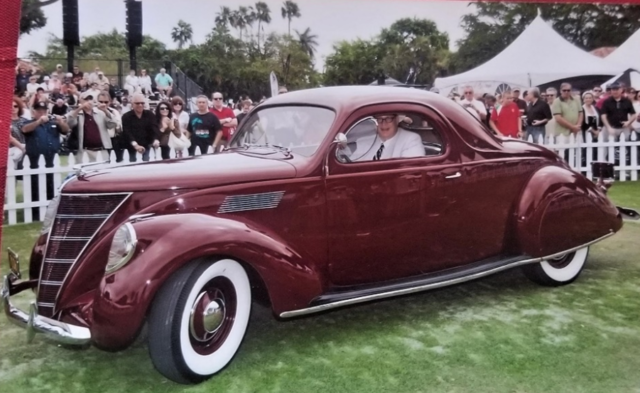
Cecil with his prize-winning Zephyr
“And that was a blow, it was really difficult to endure — I couldn’t write for awhile,” she said. “There were at least two stories that focused on my daughter and her family and I decided I should get those printed. I worked very hard for a year and got it published in April. I realized when I was doing it, when I really got going on it, I wanted to do it for another reason — to celebrate the people in my past — in Weldon and Halifax — that had meant so much to me.”
Another reason was to talk about the UMC Woman’s College in Greensboro, she said. The university had a sequence of names as it evolved. It was known first as the State Normal and Industrial School, and after 1897 as the State Normal and Industrial College until 1919. During the period 1919-1931, it was known as the North Carolina College for Women, and became the Woman’s College of the University of North Carolina from 1932 to 1963.
Alice said she graduated with an economics degree in 1954 and then earned her Masters in Economics from Duke University.
After “South Toward Home” was published, Alice had plans to share it in Halifax, but COVID-19 has changed her plans for now.
Her close friend and former classmate Glenn Dickens said the book will be sold in Halifax at the Bass House.
“And hopefully, if this pandemic gets over she can have a book signing here,” she said.
Dickens said Alice’s mother taught her French and was her favorite teacher. She said Alice is “a mighty fine person.”
“I am very impressed to have her as a friend,” she said. “I read the book and I thought it was wonderful and so well written I couldn’t put it down. I am reading it over because I am sure I missed a lot. It is so informative of things back in that time — it brought back a lot of memories.”
The book’s cover has its own story — it is a picture of the Roanoke River in Weldon, captured by Weldon resident and photographer, Lee D. Copeland.

Mist on the Roanoak River that became the cover of South Toward Home
Photo by Lee D. Copeland
Copeland Ltd Photography, Weldon, NC
Alice had a copy of the picture, without identification, and she wanted to find out the photographer’s name. She found it at the Riverside Mill in Weldon, where Copeland has several photographs for sale, he said.
After searching for a couple of days, she received some help from her daughter Andrea and Nancy Mueller, board member of the Halifax County Arts Council. Andrea found Copeland’s wife, Dee Riddle Copeland, on Facebook.
Dee’s mother, Janie, who also lives in Weldon, is 98 — they all live in Weldon, Alice said.
“She responded to my daughter on Facebook and Lee gave us permission to use it for the cover,” Alice said.
Copeland said the photo was in Weldon at the first falls on the Roanoke River near the boat ramp on the first cold fall morning several seasons ago.
“I had been watching the river for some time, waiting for three things to come together,” he said. “The falls colors to peak, the river to be low enough to flow through the rocks, the air to be cool enough to allow the mist to rise on the river from the warmer water.
“The three elements came together early on a weekend morning where I spent 90 minutes with my Nikon, photographing the area until the sun got high enough to dissolve the mist,” Copeland said. “I have always felt it was one of my best photos of the river and am very pleased that Mrs. Irby, after seeing the picture on a greeting card, was moved enough to track me down and ask permission to use it on her book cover.”
Copeland said, after the book was published, Alice and Andrea, while passing through the area, stopped by the Copeland’s front porch.
“And spent a delightful 45 minutes visiting with my mother-in-law, Janie Riddle, and Dee and I, reminiscing and discussing friends brought together by the Roanoke River,” he said.
Copeland said he has been taking pictures for 50 years, working professionally for about 20 and as a hobby the rest of the time.
“I worked at several newspapers in Eastern North Carolina, including The Daily Herald with Dick Kern as my editor. I covered the Nixon, Ford and Carter White House while in the Army, the bicentennial in Washington, D.C., and was appointed to the Jimmy Carter Presidential Inaugural Committee.”
As a result of the book, Alice has submitted it for two awards from the N.C. Literary and Historical Society Association and the North Carolina Society, she said. The suggestion came by way of a retired professor at NC State, James W. Clark. He is a well-known award-winning North Carolina writer, who went to Littleton High School, and who read Alice’s book, she said.
The two became acquainted.
“I am not sure when I will find out if I won, but I did send them in,” she said.
When asked why folks should read her book, Alice said it is what she calls a comfort book.
“They are stories about people who lived ordinary, but at the same time exceptional lives,” she said. “I think for many people it will connect to their own memories of their growing up. It is also a social history of about seven or eight decades.
“I am 87 years old, I lived through two-thirds of the 20th Century,” she said. “It will remind people of their own lives in those times. I have heard from people I knew when I was growing up and people who I don’t even know, and they identify with someone in the story. It triggers their memories of their own lives in those times.”
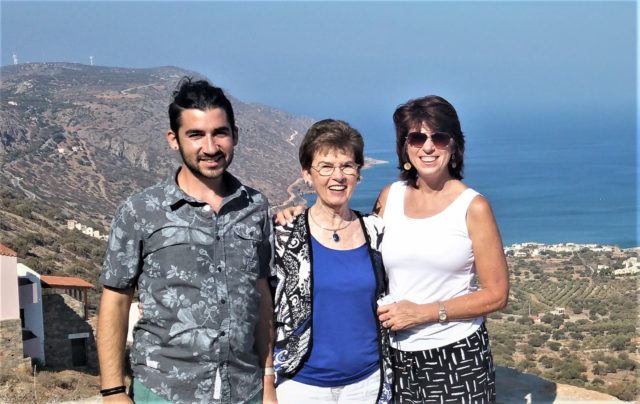
James, Andrea’s son, Alice, and Andrea on the Island of Crete, August 2016
The book is available at Amazon.com and the Outer Banks Publishing Group Bookstore.
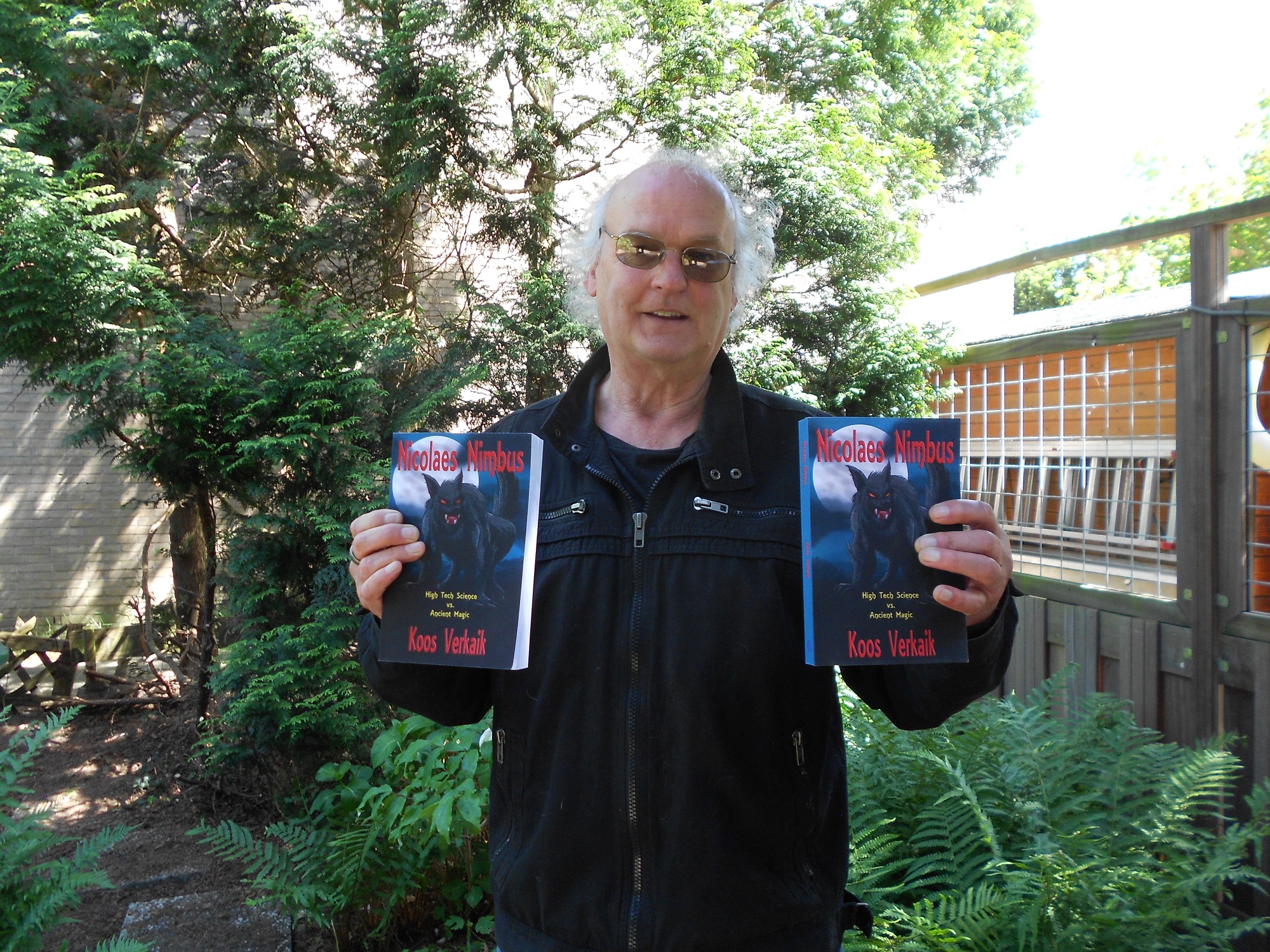
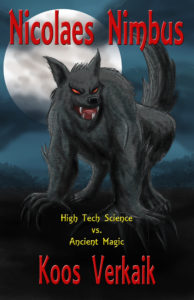 Publisher’s Note
Publisher’s NoteKoos Verkaik is one of the hardest working authors we know of today. He has 60 different titles under his own name and more than another 60 under a pseudonym! He a true master of the genre: Magic, Mystery, and Adventure!
For Outer Banks Publishing Group he has written the intriguing novels Heavenly Vision and The Nibelung Gold, plus the series of children’s books Saladin the Wonder Horse and Alex and The Wolpertinger.
Outer Banks Publishing Group has just published his newest novel, the sensational, breathtaking Nicolaes Nimbus, a high tech science vs ancient magic blockbuster…
From the back cover:
Scientists and wealthy owners of high-tech companies have pumped millions of dollars into the search for immortality. But does the future look bright or is there disaster waiting behind the horizon of time? The world is getting more complicated by the day, but who’s actually in charge?
A group of scientists in Germany have unmasked a cheating visionary. An intriguing phenomenon from the past turns up. Who is Nicolaes Nimbus? Is he an immortal man of flesh and blood from our ancient past? The hunt is on! The secret is priceless! Who is in control, the scientists or the mystic? The intriguing novel Nicolaes Nimbus embraces modern developments… and warns against ancient magic that never dies, waiting for the right time to manifest itself.
OBXPG: A book for this day and age, a book that had to be written…What is the book about?
Koos Verkaik: We live in a very interesting time, with a period of magic and superstition behind us and a period of unknown technical progress in front of us. You might say that we live in an interim. Allow me to tell you the facts in just a few words:
We see the world through the filter of our brain – brainstem, midbrain, frontal lobe.
As human beings, we are still evolving and we cannot imagine how we will see our world after our frontal lobe has grown, and it will. Scientifically, intervention will make us almost immortal, hyper-intelligent, and very different from what we are now.
Today we stand with one leg in the past (the magic and superstition I mentioned) and one leg in the future (longing for the possibilities that will make us live healthy and strong for ages).
Magic is still around us, but we are afraid of the future, of what will happen to the human race.
That is what Nicolaes Nimbus is about, ancient magic vs high tech science!
OBXPG: I assume you studied the past and the future for this novel?
Koos Verkaik: Oh yes! I always do a lot of research before I start working a novel. I am a collector of books about history, magic, strange phenomena, science, etc. There are over 2000 different books in my workroom and I know exactly where to find the facts I need for new novels. For Nicolaes Nimbus I read several non-fiction books. Here are just a few: Religion and the Decline of Magic by Keith Thomas, almost 800 pages of stunning information; The Secret History of the World by Jonathan Black, The Greatest Show on Earth, The Evidence for Evolution by Richard Dawkins; What We Cannot Know, Explorations on the Edge of Knowledge by Marcus de Sautoy and of course the great works of Yuval Noah Harari, From Animals into Gods, and Homo Deus. I admire the German author, Hoimar von Ditfurth, he has written in-depth about the universe, about the development of the human brain, and about the way life became possible on our planet.
OBXPG: Heavy stuff – but are your books easy to read?
Koos Verkaik: Yes. You can read my books as pure entertainment. On the other hand, you can read between the lines and discover interesting facts. My fiction is easy to read. I will take you by the hand and lead you through my odd worlds of fantasy. All my work is pure adventure.
OBXPG: Have you written about magic and science before?
Koos Verkaik: Many times. I wrote my first novel at the age of 18 and it was published right away. It was about a young man who offered his brain to build an intelligent starship. The main character, Adolar (also the title of the novel), said no to this weird proposal from the scientists, but his friend and colleague Jit agreed to do it. More than often I often perform tricks with the human brain in my books.
OBXPG: So you started very early as a writer. And it is said that you have never had writer’s block?
Koos Verkaik: I write like I work, from one to the next with almost no break in between. I was the youngest comic writer in Europe at the age of 16. Then I started to write novels. And I worked as a copywriter for a big agency always working, every day. I write in Dutch and then have my books translated into English with the help of my editors. Nicolaes Nimbus was edited by Dennis De Rose of Moneysaver Editing. He did a fantastic job with Nicolaes Nimbus and I intend to work with him on my next book.
OBXPG: Tell us some more about Nicolaes Nimbus.
Koos Verkaik: One of the main characters is Rein Vulpes, a young master painter from Rotterdam.
He always uses a stage name, derived from Vulpes vulpes, the Latin name for fox. His first name is his true name but he feels a strong affinity to Reinaert, the fox from medieval Europe portrayed in adventurous animal stories as a very sly rascal who is always one step ahead of the others. Rein always manages to nudge things his way, to manipulate people and situations. He knows how to lead everyone up the garden path, how to set a trap for other animals, from cats to dogs, from badgers to hare, even the strong wolf, the bear and the royal lion. He has memorized many lines from poems about the fox and every now and then when the situation calls for it, he recites:
“Then hear me, noble gentlemen, I will be happy to inform you how I, innocent like the hares, came to my first tricks and snares…”
Rein Vulpes is given to laughter, he is pliable but is not to be trifled with and he will get his own way. He lives from day-to-day confident that he owns the town; he diminishes all people around him to mere walkers-on in a play that is especially written for him.
“And when the curtain falls, when I breathe my last, it is all over and done – then nothing exists anymore.”
OBXPG: You come up with odd, colorful characters often. It has become a Koos Verkaik trademark. Can you expand on that?
Koos Verkaik: Nicolaes Nimbus is full of strange people, scientists, and charlatans, for instance. And then there is, of course, Nicolaes Nimbus himself, a most mysterious figure from the past, a sorcerer, a magician – but no one knows if he actually exists. Is he a just larger than life or is he still alive, perhaps immortal?
That is what it is all about in this novel – the search for immortality. A group of extremely clever rich German and Dutch scientists hopes to live forever. They search for different possibilities to prolong life and spend lots of money to reach their goal. Then they hear about a wizard who was supposed to have lived ages ago – Nicolas Nimbus. If Nicolaes Nimbus is still alive and has found the secret of immortality through magic; the scientists want to find him – to examine him in their labs! But they need master painter Rein Vulpes to set a trap for Nicolaes Nimbus. Then high tech science meets ancient magic…
Yes, this book had to be written… before magic has completely vanished from our world.
Here we stand, halfway up the ladder to perfection, with a brain that has not completely developed, the earthly past beneath us, and the heavenly future high above us…
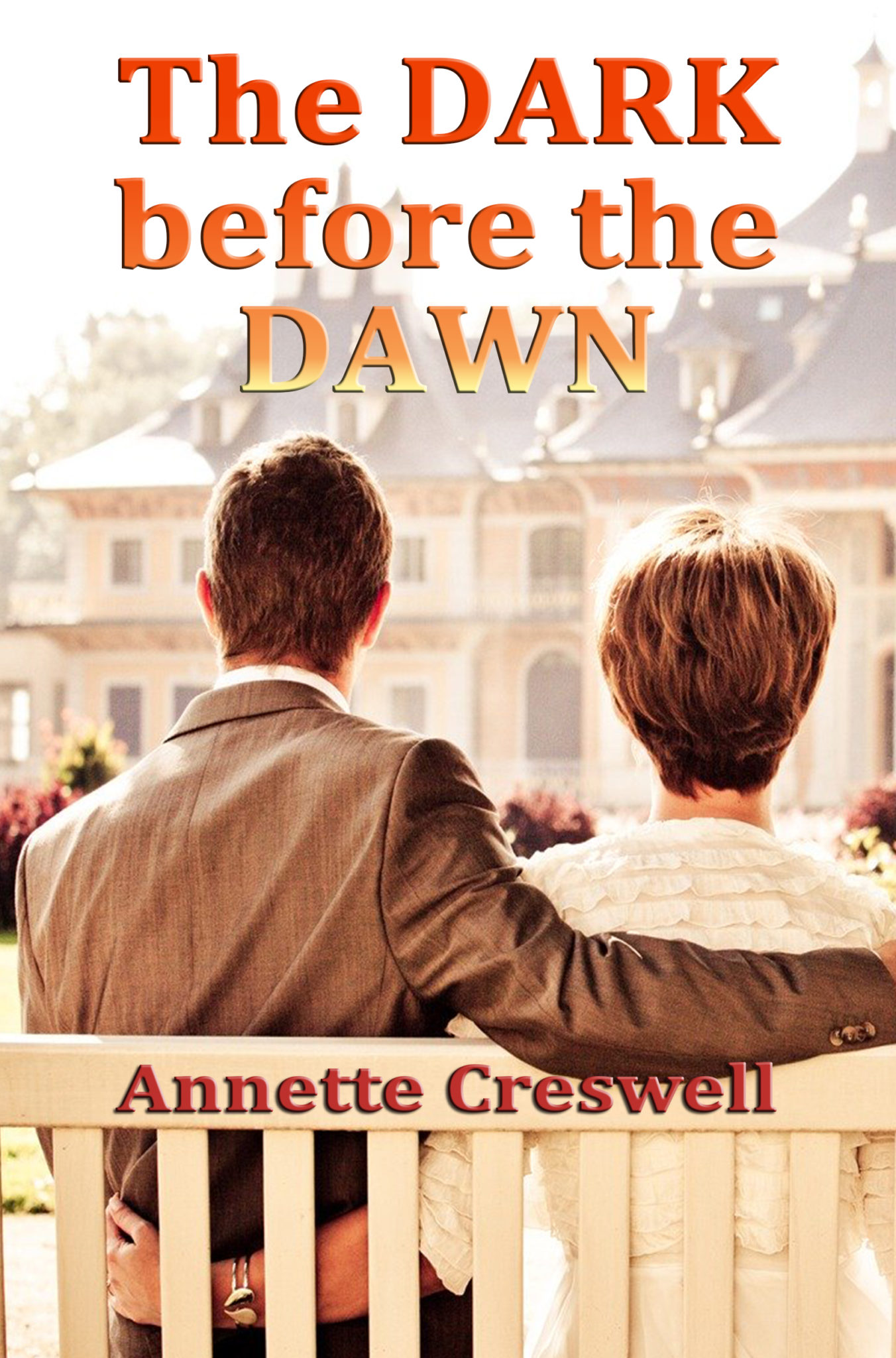
Listen to one of the chapters from Annette Creswell’s The Dark before the Dawn, a love story shortly before the start of World War II. The Dark before the Dawn is available here in our bookstore, on Amazon and in fine bookstores everywhere.
Synopsis
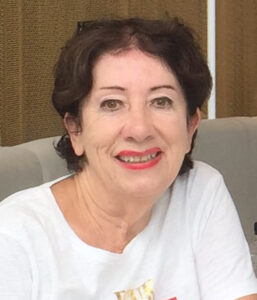
Author Annette Creswell
Just before the start of World War II, Peggy Davis, a London midwife, has a chance encounter with a stranger that changes her life forever.
When Peggy meets Charles, a wealthy lord as she boards a bus in front of Harrods department store, fate casts them together.
When Charles’ wife, Diana, and first child die in childbirth, Peggy, and Charles are thrust into a relationship of happiness, sorrow and unexpected tragedy.
They ultimately marry, have a son and adopt an east end refugee boy from London.
What transpires is a web of family dramas a la Downton Abbey with lesbian relationships, Nazi sympathizers and family secrets revealed as Peggy attempts to navigate through her new life from midwife to lady of the manor.